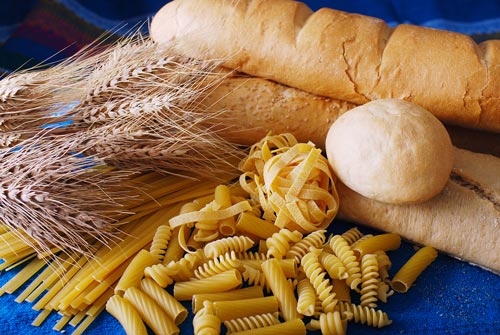The Borlaug Summit on Wheat for Food Security will celebrate the life and legacy of Dr. Norman Borlaug while addressing wheat’s role in food security today. The event will take place in Ciudad Obregón, Sonora, Mexico, on 25-28 March.
Sam Storr/CIMMYT
Wheat is the most widely cultivated cereal worldwide, providing micronutrients and up to 20 percent of dietary protein for 4.5 billion people in 94 developing countries. Changing diets and the ability of wheat to adapt to different conditions has expanded consumption. At the same time, the crop has faced new criticism, particularly from proponents of popular diets in the developed world.
A survey of the most recent academic literature addressing, “Does wheat make us fat and sick?” finds most of the accusations leveled at wheat to be misconceptions, underlining the crop’s continued importance for global nutrition. Wheat consumption is blamed for causing obesity, cardiovascular problems and diabetes.

However, the study finds little evidence that wheat in processed foods is directly responsible for adverse health effects. Wheat was widely consumed long before the modern obesity epidemic. In fact, the consumption of whole grains in the U.S.A. and Europe has recently been found to be associated with the reduced risk of Type 2 diabetes, cardiovascular disease and some forms of cancer.
Those with celiac disease (less than 1 percent of the population) or gluten sensitivity (estimated at between 5 and 10 percent) can suffer from eating wheat, the study authors agree, and more research is needed to understand these conditions. Study authors say that the science behind claims that wheat is unhealthy is often misinterpreted. One example is glycemic index, a measure of how blood glucose rises after a food is eaten, which is wrongly seen as evidence that wheat is bad for you.
Cardiologist W.R. Davis, author of Wheat Belly, claims that wheat contains addictive opioids that make it impossible for people to regulate their diet. Although laboratory tests have shown that the protein gliadin can break down into an opiate under certain conditions, it is impossible for it to be absorbed into the bloodstream. Humans have cultivated and bred wheat for more than 8,000 years, but plant breeding since the 1960s is accused of creating unhealthy or unnatural wheat in the search for higher yields. Gliadin is highlighted as an “unnatural” component of wheat, even though its presence dates back to ancient wheat and it is found in rye and barley as well.
CIMMYT wheat breeders have more on their minds than just yields. Dr. Norman Borlaug understood from the outset that successful breeding must produce high-quality wheat. He thus established the CIMMYT wheat quality lab in the late 1960s, now a central part of the breeding program, recalled Javier Peña, former CIMMYT wheat grain quality specialist.
Thinking about quality keeps wheat relevant to the world. Different culinary traditions require wheat with different characteristics, but the global diet is changing. “Many of the foods now popular around the world were at one time only regional favorites,” Peña said. “This has to do with lifestyles, such as greater participation of women in the work force.” The genetic diversity of wheat means that breeders can find varieties with higher levels of micronutrients such as iron and zinc, a lower glycemic index, or polysaccharides that mimic the action of fiber to make food more satisfying.
As CIMMYT scientists work to improve wheat’s characteristics to benefit global food and nutritional security, it is important to include traits that can make food more appealing and healthy.
 Nutrition, health and food security
Nutrition, health and food security